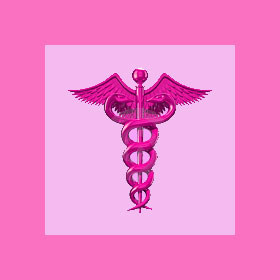
Breast hypertrophy is a medical term for abnormally excessive and rapid breast growth. There are a variety of hypertrophy conditions which can affect woman at various times in their lives. Hypertrophy can affect both breasts equally or only one breast, causing severe asymmetry issues. Hypertrophy can also affect the nipples and areola, in addition to the breast, or instead of the entire breast.
This insightful essay profiles the different types of hypertrophic breast conditions and their consequences.
Virginal Breast Hypertrophy
VBH is also commonly called juvenile hypertrophy, juvenile macromastia or juvenile gigantomastia. VBH starts during the time when a girl begins to change into a woman physically.
The maturation process during puberty sets off a hormonal firestorm in the young girl’s body. For reasons unknown, some girls develop startling bursts of rapid growth, which can produce huge breasts in a short time frame.
The condition might affect both breasts equally, but usually affects one side more than the other. The effect produced can range from a minor size variation to an extreme breast asymmetry issue.
Juvenile Breast Macromastia Treatment
Severe hypertrophy might make a young girl into a good candidate for corrective therapy.
Non-surgical reduction methods are not always a good option in a developing girl, due to known and unknown side effects associated with many treatment protocols. The most common of these noninvasive modalities includes hormone therapy, pharmaceutical treatment and steroid use.
Breast reduction surgery is often used when the growth rate has stabilized.
In cases where the breast continues to grow or demonstrates a re-growth after aggressive or surgical treatment, a full mastectomy will often be a last resort option. Of course, breast reconstruction is a common add-on procedure to any mastectomy performed to treat hypertrophy.
Other Forms of Breast Hypertrophy
Pregnancy is the second most common reason for a hypertrophic breast condition to exist. The hormonal changes in women during pregnancy will normally cause substantial breast growth, but sometimes, this process goes completely awry, creating a gigantomastia condition.
This type of hypertrophy usually corrects itself as the hormones balance out, but might still enact permanent significant breast growth which may require reduction mammoplasty to resolve.
Other types of macromastia can exist due to pharmaceutical side effects or specific health concerns in women of almost any age.
Symptoms of Macromastia
The fast growth rate associated with this condition can be very painful to endure. The skin has a difficult time stretching fast enough to accommodate the rapid increase in tissue size. This might produce redness, rash or burning pain throughout the breast.
Affected nipples are especially painful, due to their rich vascular and neurological supplies.
This sudden growth can also cause acute back, shoulder or neck pain which might be very severe and debilitating. Posture is often affected and skeletal changes can actually result if the condition persists.
Besides the nasty physical effects of hypertrophy, the emotional consequences are tremendous, especially in a developing girl. Huge rapid breast growth is very scary and can shatter a girl’s self image, making her loath her own body.
The condition usually produces psychological and physical effects including: antisocial behavior, introversion, lack of confidence, insecurity, fear, anxiety, depression, suicidal thoughts and chronic fatigue.
Breast Hypertrophy Advisory
This is a condition which is best treated, or at least monitored, by a specialist in hypertrophic breast syndromes. There is no easy solution for very problematic hypertrophy conditions and every treatment choice will have significant drawbacks.
It is important to explore all your options, if you are suffering from any form of hypertrophic breast disorder. Learn all the benefits and drawbacks of each therapy modality and make an informed choice which will work best for you.
Your doctor will help guide you through this trying time and hopefully assist you in regaining a normal life, with more typically sized breasts.
Regardless of whether you require treatment, or whether your condition resolves on its own, make sure to assist the medical community to better understand this condition by sharing your experiences with doctors and fellow patients alike.




